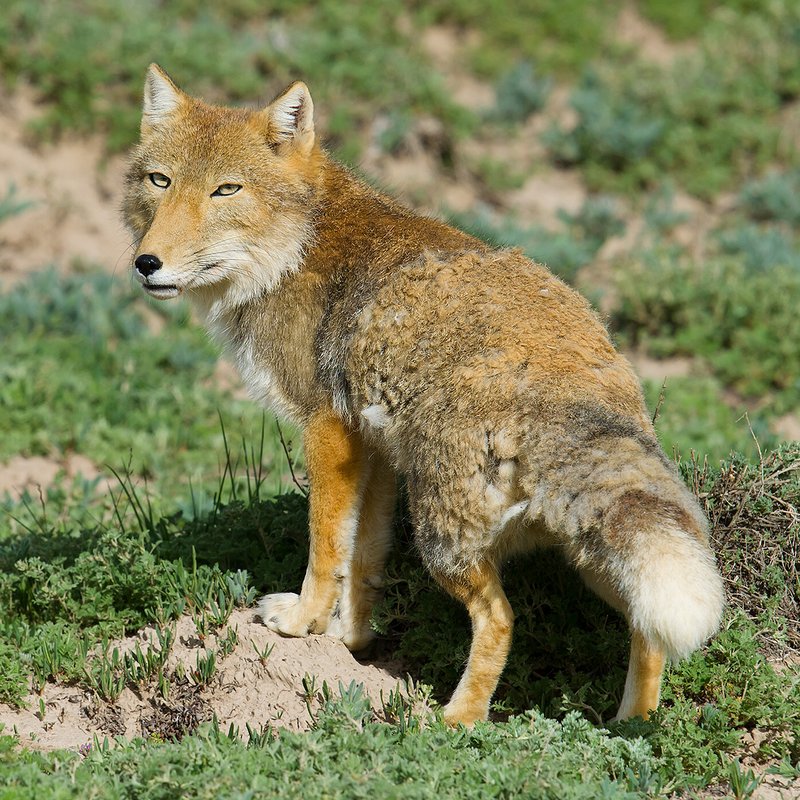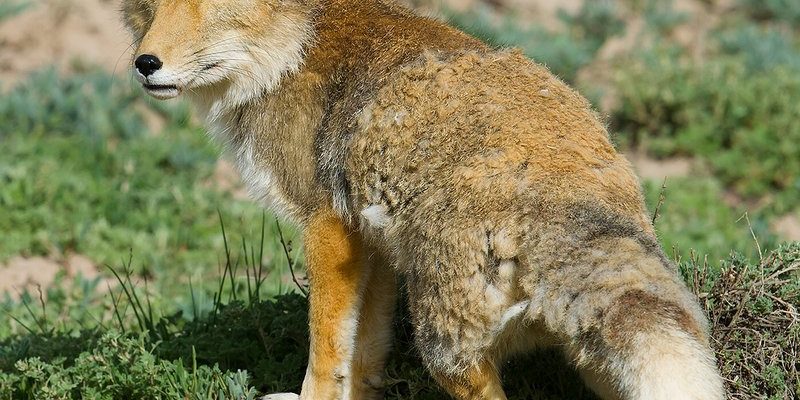
So, what makes the Tibetan fox tick? To really get into their cognitive abilities and behaviors, we’ll explore how they think, solve problems, and interact with their environment. Think of it as peeling back the layers of an onion—each layer revealing a bit more about their remarkable skills and instincts.
Overview of the Tibetan Fox
The Tibetan fox, known scientifically as *Vulpes feral*, is native to the Tibetan Plateau. This high-altitude habitat is no walk in the park. It’s characterized by harsh climates and sparse vegetation, making survival a real challenge. These little foxes have adapted remarkably well, showcasing a range of behaviors and cognitive skills that help them thrive in such an unwelcoming environment.
You might be wondering what they look like. Tibetan foxes have a striking appearance with a distinctive light-colored coat, unique facial markings, and a bushy tail. They’re relatively small, usually weighing about 6 to 13 pounds. Their size and coloring help them blend into the rocky terrains, making them effective hunters.
Their primary diet consists of small mammals, birds, and insects. What’s interesting is how they hunt. Instead of relying solely on speed, they often use their intelligence and stealth to outsmart their prey. This brings us to the question of their cognitive abilities—how do they measure up compared to other animals?
Cognitive Abilities: Problem Solving and Learning
Let’s dive into the brainy stuff. Tibetan foxes exhibit a fair amount of problem-solving skills, which is crucial for finding food and navigating their environment. For instance, they can figure out how to dig through the snow to reach buried rodents. This ability to adapt their hunting strategy based on the situation showcases a level of intelligence that’s impressive for their size.
One fascinating aspect of their cognition is how they learn from experience. Research suggests that these foxes can remember locations with food or potential dangers. When they encounter a new environment, they scan their surroundings and make mental notes. It’s like they’re keeping a little map in their heads, adjusting it as they gather more information.
Plus, they can also observe their peers and learn from their behaviors. If one fox finds a successful way to catch a meal, others might pick up on that technique. This social learning is a sign of advanced cognitive processing, showing that they’re not just relying on instinct alone.
Social Structures: How They Interact
Thinking about how Tibetan foxes interact with each other is like looking into a puzzle. Their social structures can vary, but they typically live alone or in small family groups. This solitary nature sheds light on their behavioral strategies. They’re often seen communicating through vocalizations, body language, and even facial expressions.
Their vocalizations include barks, howls, and screams, which they use to signal different messages like territory warnings or mating calls. Here’s the thing: these sounds are often quite nuanced, hinting at a level of communication that might surprise many.
Additionally, their social interactions extend to hunting as well. In some cases, foxes will work together to flush out prey, demonstrating a unique form of teamwork. While they’re not pack hunters like wolves, their occasional cooperation adds complexity to their relationships and enhances their hunting success.
Adaptation to Harsh Environments
Living on the Tibetan Plateau isn’t easy. These foxes have developed incredible adaptations to thrive in high altitudes and extreme weather conditions. For starters, their thick fur keeps them warm during freezing temperatures. But it’s not just about staying cozy; they also have an innate ability to find shelter, either by burrowing into the ground or hiding beneath rocky outcrops.
Tibetan foxes also exhibit remarkable resilience when it comes to diet. They can adapt their eating habits based on food availability. For example, they might switch from hunting rodents to foraging for plant materials if small mammals become scarce. This flexibility is vital for survival, especially in an unpredictable environment.
Moreover, their keen senses help them navigate the vast landscapes of their habitat. Excellent hearing and a sharp sense of smell allow them to detect prey from significant distances. This sensory prowess enhances their hunting capabilities and makes them formidable predators, even in challenging conditions.
Behavioral Insights: Play and Exploration
It’s not all about survival for Tibetan foxes; they also engage in playful behaviors that highlight their cognitive abilities. Observations reveal that younger foxes enjoy playful interactions, whether it’s chasing each other or investigating new objects in their environment. This play is essential for their development, teaching them skills they’ll need as adults.
Interestingly, these playful antics can aid in their learning processes. By exploring their surroundings through play, they become more adept at navigating their territory and recognizing potential threats. Think of it as a form of practice, much like how human children play games to learn social skills and problem-solving.
You might find it heartwarming to know that these foxes also show curiosity. Their explorative nature drives them to investigate unusual sights or sounds, showcasing their intelligence. This curiosity isn’t just a cute trait; it’s a survival mechanism that keeps them aware of their surroundings.
The Importance of Conservation
Now that we’ve explored the cognitive world of the Tibetan fox, it’s crucial to address their conservation status. Due to habitat loss and climate change, these remarkable creatures face significant threats. As their environment changes, their survival skills are put to the test.
Conservation efforts are vital to ensuring their future. Protecting their habitat helps maintain not only their populations but also the balance of the ecosystem they inhabit. By preserving these natural spaces, we can support the Tibetan fox and other wildlife that rely on this fragile environment.
You can play a part in conservation too! Educating others about the Tibetan fox and advocating for their protection helps raise awareness. The more people understand and appreciate these incredible animals, the better chance they have at surviving for future generations.
In conclusion, Tibetan foxes are far more than just another member of the wildlife family—they’re intelligent, adaptable, and resilient creatures that showcase the wonders of evolution. From their problem-solving skills to their playful behaviors, they offer us a glimpse into the complexities of animal cognition.
So the next time you hear about a Tibetan fox, remember that beneath their sly exterior lies a wealth of intelligence and adaptability. We should cherish and protect these incredible animals, ensuring they continue to thrive in their unique habitats. After all, the world needs more clever creatures like them!

